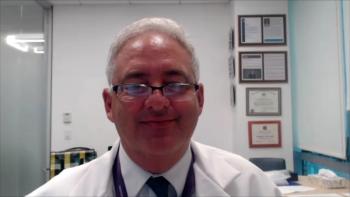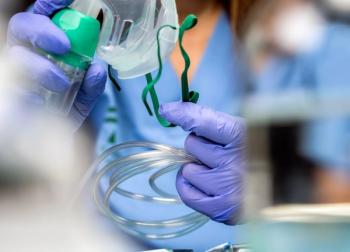
Disrupted Nighttime Sleep an Indicator of Narcolepsy in Children
Children with narcolepsy often have disrupted nighttime sleep (DNS), which could lead to other effects, such as memory issues.
Narcolepsy in children has a distinct association with
Understanding DNS
Narcolepsy affects approximately 0.05% of the United States population. Patients with narcolepsy type 1 (NT1) have a loss of orexin neurons, and patients with narcolepsy type 2 (NT2) have normal orexin levels. Among these patients, symptom frequency of DNS ranges from 30% to 90%.
“What happens in narcolepsy is there’s a loss of the orexin neurons and then the switch becomes unstable,” said Maski. “Sleep intrudes into awake, causing excessive sleepiness.”
However, Maski pointed out, there is no accepted way to measure DNS in an objective way.
“The number of different variables is vast…[sleep stage] N1 percentage oftentimes is high in patients with narcolepsy, and [sleep stage] N3 is oftentimes low. Arousal index has high delta power, non-REM [rapid eye movement] sleep can be decreased; you can have increased amounts of wake after sleep onset, poor sleep efficiency, an increasing number of waking bouts; and then a number of sleep stage transitions can be different and there can be different combinations of some stage transitions,” she said
Studies have been done to link subjective complaints about DNS to more objective measures. A study presented by Maski did this, and it found N1 and N3 percentage, WASO, number of wake bouts and sleep bouts, and mean sleep bout duration were associated with DNS in the 59% of patients who reported moderate to severe DNS.
“So unfortunately, while it narrowed the list a little bit, there are still many other objective values here that we could potentially use for measurement,” said Maski.
Stages of Sleep Affected by DNS
Learning which sleep stages are most vulnerable due to irregular transitions in sleep vs wakefulness in patients with NT1 is important to ongoing understanding and treatment. A study including children aged 6 to 18 years where polysomnograms were rescored blinded to diagnosis was conducted to evaluate what the effects of DNS on sleep cycles.
The study found that patients with NT1 were unable to sustain long wake bouts compared with controls; they were also unable to sustain REM sleep bouts.
“It’s really the narcolepsy group that has difficulty sustaining wake bouts that are any longer than 200 to 250 seconds. So that’s about a 3-minute period before their wake periods just slowly decline,” explained Maski.
The study also found that patients with NT2 had increased survival of non–REM 1 sleep compared with other groups whereas patients with NT1 had decreased survival of non–REM 2 sleep. Patients with idiopathic hypersomnia had increased survival of non–REM 2 sleep as well. Children with NT1 had stable N3 sleep.
How DNS Affects Cognition in Children With Narcolepsy
Maski and her team hypothesized that DNS could be a specific symptom that impairs the processing of memories in children with NT1. An experimental study was conducted at Boston Children’s Hospital where children with NT1 were tested for their IQ 10 days before the study; there were also 7 days of actigraphy. In the lab, children did a 3-minute PVT, a learning task, and a test. Children then went to sleep and had a polysomnography done before taking another psychomotor vigilance test, retesting, and doing a new learning task. Children’s tests were memory and learning based using matching cards.
The children in the NT1 group had a mean (SD) age of 15.9 (2.9) years compared with 13.8 (3.7) years for the control group; 59.3% and 46.2%, respectively, were female patients. Children with NT1 had more wake and N1 transitions and less consolidated N2 and REM sleep compared with the controls.
“Even though the patients with NT1 were older, they performed more poorly in the ability to learn the criterion,” explained Maski when revealing the results of the study. “Twenty-three percent of our patients really struggled to even learn where the card pairs were.”
Memory consolidation was also found to suffer in patients with NT1, with these patients losing 15.8% of the information they learned in the previous day compared with 3.1% in the control group. Patients with NT1 also had worse morning performance vs controls. The spindle duration of N1 and N2 was also associated with sleep dependent memory.
Maski concluded by saying that DNS is a disorder with heterogeneous symptoms comprising intrinsic sleep instability and nocturnal comorbidities for patients with NT1. This instability has been found to affect N2 and REM sleep the most in this population, with sleep instability being unique to patients with NT1 and present in children.
“I think further testing is certainly needed to assess whether this might have an impact on broader concerns about cognition,” she said. “And I hope to produce some important metrics for all of you to study potential metabolic, medical, and psychiatric consequences of DNS.”
Newsletter
Stay ahead of policy, cost, and value—subscribe to AJMC for expert insights at the intersection of clinical care and health economics.

















































